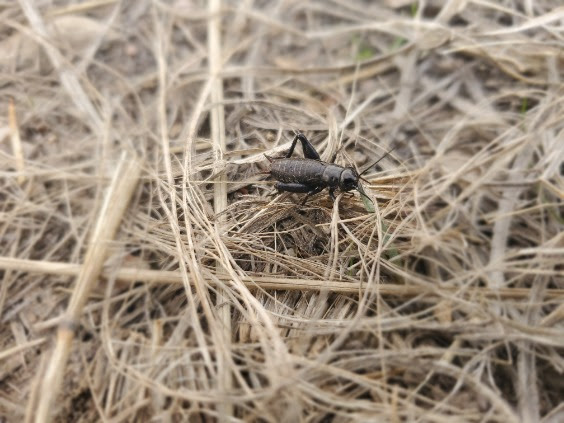About two years ago our Development Director, Glenn, witnessed and documented a female of this species slurping up Gray Swordgrass Moth eggs around his front door (see the series of […]
Read MoreArticles by: Morgan McNeill
Spring Stonefly in the family Nemouridae
Spring stoneflies, as their name suggests, typically emerge as adults in spring. They are small, brownish, and unique among other stonefly families for having an “X” pattern of venation toward […]
Read MoreWalnut Spanworm Moth, male (Phigalia plumogeraria)
We can tell right away that this is a male, because strangely enough the females don’t have wings! These early season moths can be found from January to April (March and […]
Read MoreSpring Field Cricket (Gryllus veletis)
After overwintering as nymphs, spring field crickets are on the move again in fields, vacant lots, and other weedy grassy areas. They are the most common large black cricket with […]
Read MoreSnow Fleas in the genus Hypogastrura
While snow fleas are active all year round, these tiny little guys are much easier to see after the snow flies, looking like someone sprinkled pepper on top of the […]
Read MoreWinter Crane Fly in the genus Trichocera
There are close to 30 species of winter crane flies in North America. Compared to some of the massive crane flies we see in flight in spring and summer, they […]
Read MoreSnow Scorpionfly in the genus Boreus, possibly Boreus californicus
Snow scorpionflies are active in winter and are most often seen crawling over the surface of the snow. Sort of resembling a dragon close up, they are small (2-7 mm), […]
Read MoreWinter Caddisfly in the genus Psychoglypha
At first glance, caddisflies look much like their closest living relatives — the moths and butterflies. How to tell the two groups (orders) apart? Zoom in on their wings and […]
Read MoreOne-eyed Sphinx Moth (Smerinthus cerisyi)
These beautiful moths can be found coast to coast in the northern United States, plus all of Canada (including the arctic) and into Alaska. Photo by Melissa Sheasley on July […]
Read MoreQueen Alexandra’s Sulphur (Colias alexandra)
The underside of the hindwing on this sulphur tends to be a softer green in color. The cell spot on the hindwing has a faint or absent red rim. Note: […]
Read More








